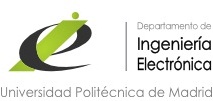Bibliografía general:
- M. Bear, B. Connors, M. Paradiso. �Neurociencia. Explorando el cerebro�. Williams & Wilkins. (3a ed.). 2008
- B. He. "Neural Engineering". Kluwer Academic. 2005.
- D. Purves et al. �Neuroscience�. Sinauer Associates, Inc. (5th edition). 2011
Redes neuronales artificiales:
+ D.P. Morgan, C.L. Scofield, �Neural Networks and Speech Processing�, Kluwer Academic Publishers, 1991
Sistema auditivo:
+ W.A Yost, Fundamentals of Hearing: An Introduction, Academic Press, 2000.
+ B.H.Brown, R.H. Smallwood, D.C. Barber, P. V Lawford, D.R. Hose, �Medical Physics and Biomedical Engineering, Institute of Physics Publishing, 1999
+ D. O�Shaughnessy, �Speech Communications : Human and Machine�, IEEE Press, 2000
+ Huang, X. Acero, A., Hon, H-W. Spoken Language Processing: A guide to Theory, Algorithm and System Development. Prentice Hall, 2001
Sistema visual:
+ Ponnavaillo M., Kumar V.P., �The artificial eye�. IEEE Potentials 18(5): 33-35. Dec 1999/Jan 2000.
+ Peachey N.S., Chow A.Y., �Subretinal implantation of semiconductor-based photodiodes: Progress and challenges�. Journal of Rehabilitation Research and Development, 36(4). Oct 1999.
+ Dobelle W.H., �Artificial Vision for the Blind by Connecting a Television Camera to the Visual Cortex�. Am. Soc. of Artificial Internal Organs Journal, 46:3-9. 2000. (Disponible en http://www.dobelle.com/ )
+ Hindus L.A., �CMOS: The Image of the Future�. Advanced Imaging Magazine. May 2001.
Sistema somato-sensorial:
+ M. Bear, B. Connors, M. Pardiso. �Neurociencia. Explorando el cerebro�. Williams & Wilkins España. 1998.
+ A. Despopoulos, S Silbernagl. �Color Atlas of Physiology�. Thiem Medical Publ. (4th edition). 1991.
+ E. Kandel, J. Schwartz, T. Jessell. "Principles of Neural Science�. Prentice-Hall International Inc. (3rd edition). 1991.
+ Centre for sensory motor interaction, Alborg University. Denmark: http://www.smi.auc.dk
+ Control of Movement for the Physicaliy Disabled, D. Popovic, T. Sinkjaer. Springer Verlag. http://www.oandp.com. Resources for prosthetics and orthotics
+ Tactile transducers to replace lost touch sensation, Eric E Sabelman, PhD; Greg TA Kovacs, MD, PhD; Vincent R Hentz, MD; Joseph M Rosen, MD; Chris Kurjan, MS; Paul Merritt, MS; Greg Scott, MS; Adam Gervin, MS; Star Teachout, MS http://guide.stanford.edu/publications/dev5.html
+ Universidad de Standford. Transducers Lab. http://transducers.stanford.edu/stl/Projects.html
+ Unitech Research Inc. VIDEOTACT. http://www.execpc.com/unitech/videotac.html
+ TACTILATOR: http://www.tactaid.com/
+ Estación de Telecirugía: http://www.geocities.com/ResearchTriangle/Campus/3327/hardware.html#SENS...
+ OMRONCAT. http://www.machinebrain.com/articles/omroncat101601.html
+ HUMANOID Robotics Institute. Waseda University. http://www.humanoid.waseda.ac.jp/booklet/kato12.html
Sistemas del olfato y el gusto:
+ J.W. Gardner and P.N. Bartlett. Electronic Noses. Principles and Applications. Oxford Science Publications, 1999.
+ Martin G. Buehler, Gregory M. Kuhlman, and Didier Keymeulen. Advanced Electronic tongue Concept. 2002 IEEE Aerospace Conference.
+ John C. Leffingwell. Olfaction. Leffingwell Reports, Vol. 2 (No. 1), May, 2002
+ Ricardo Gutierrez-Osuna. Pattern Analysis for Machine Olfaction: A Review. IEEE Sensors Journal, Vol. 2, No. 3, Junio 2002
+ David Harwood. Something in the air. IEE Review. Enero 2001.
+ W. Jeffrey Hurst. Electronic Noses and Sensor Array Based Systems (Design and Application). Culinary and Hospitality Industry Publications. 1999
+ Henry Baltes, Dirk Lange y Andreas Koll. The Electronic Nose in Lilliput. IEEE Spectrum, septiembre 1998
+ Susan S. Schiffman. The how and why of electronic noses. IEEE Spectrum, septiembre 1998
El sistema de producción de habla:
+ Bernal Bermúdez, J. , Bobadilla Sancho, J. y Gómez Vilda, P. Reconocimiento de voz y fonética acústica. Editorial Rama. 2000
+ Dale, Robert, y Reiter, Ehud. Building Natural Language Generation Systems. Cambridge University Press, 2000
+ Gold B. y Morgan, N. Speech and Audio Signal Processing: Processing and Perception of Speech and Music, John Wiley & Sons, Inc., New York, 2000
+ Huang, X. Acero, A., Hon, H-W. Spoken Language Processing: A guide to Theory, Algorithm and System Development. Prentice Hall, 2001
+ Parke. A Parameterized Model for Facial Animation. IEEE Computer Graphics and Applications 2(9), pp. 61-70. 1982.
+ Quilis, A. y Fernández, J. A. Curso de fonética y fonología españolas para estudiantes angloamericanos. 12� edición. CSIC 1989.
Interfaces de usuario multisensoriales y realidad virtual:
+ "Virtual reality systems / John Vince" Redwood City, California : Addison-Wesley, 1995
+ "Realidad virtual / L.M.del Pino Gonzalez" Madrid : Paraninfo, 1995
+ "Virtual reality technologies for future telecommunications systems / edited by Algirdas Pakstas and Ryoichi Komiya Chichester, West Sussex : John Wiley & Sons, cop. 2002
+ Introducción Práctica a la Realidad Virtual Parra Marquez, J.C., García Alvarado, R., Santelices Malfani, I., Ediciones U. Bío-Bío, Concepción, (Chile) 2001. http://zeus.dci.ubiobio.cl/~sigradi/libros/
+ What Is Virtual Reality? Jerry Isdale, http://vr.isdale.com/WhatIsVR.html
+ Virtual Reality. A Short Introduction K.-P. Beier, http://www-vrl.umich.edu/intro/index.html
+ HomeBrew Virtual Reality. http://www.cms.dmu.ac.uk/~cph/hbvr.html http://www.shef.ac.uk/~vrmbg/vrhmhb/contents.html

